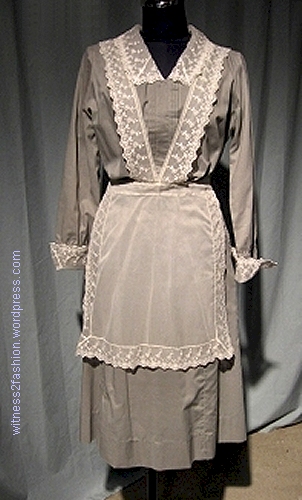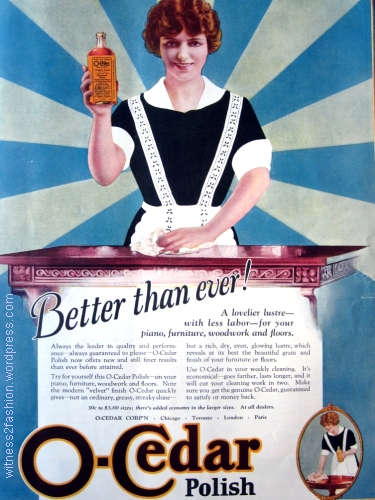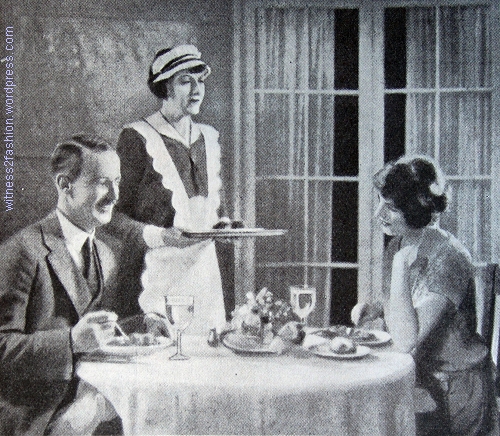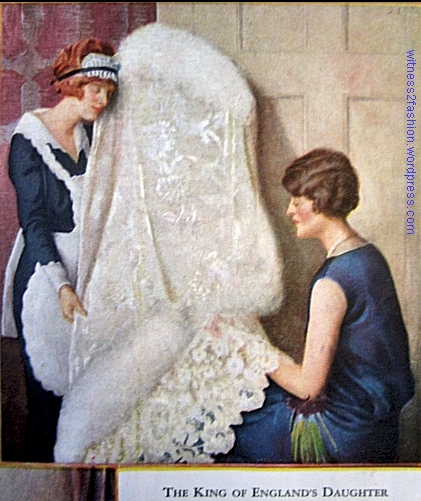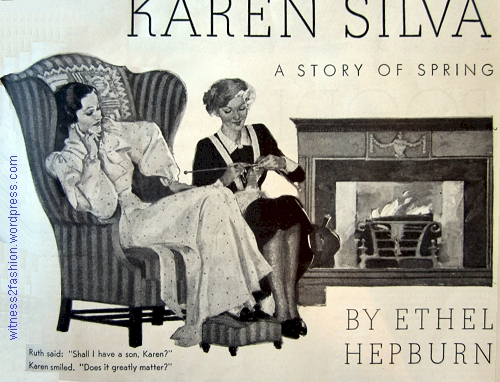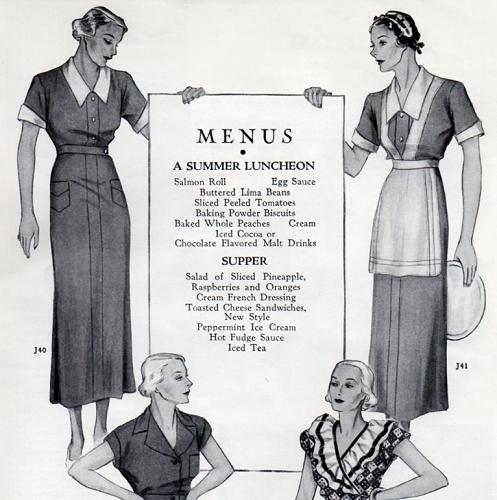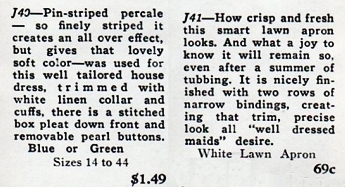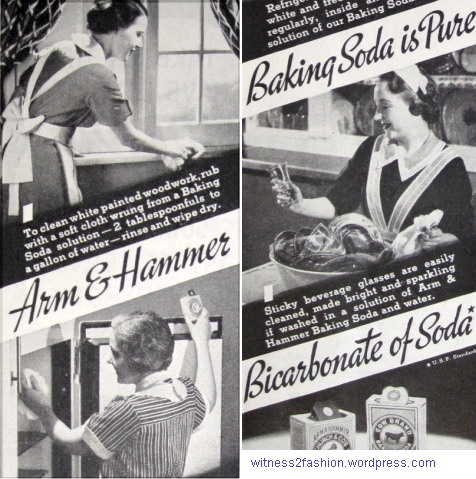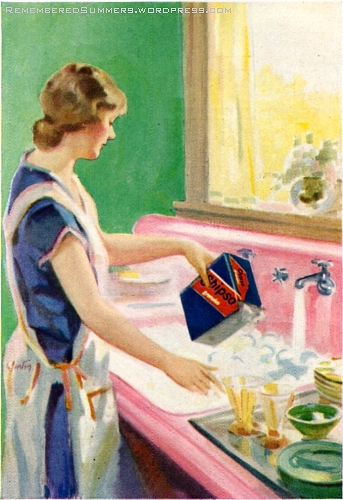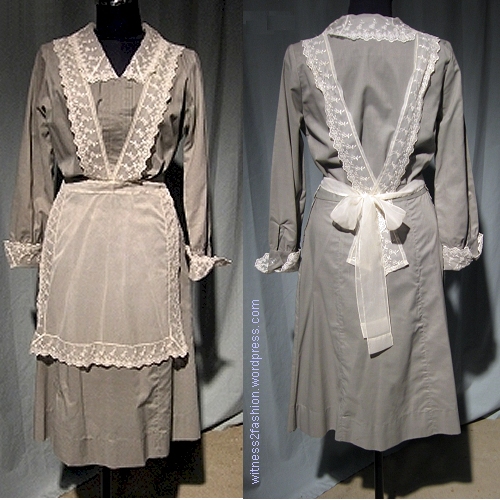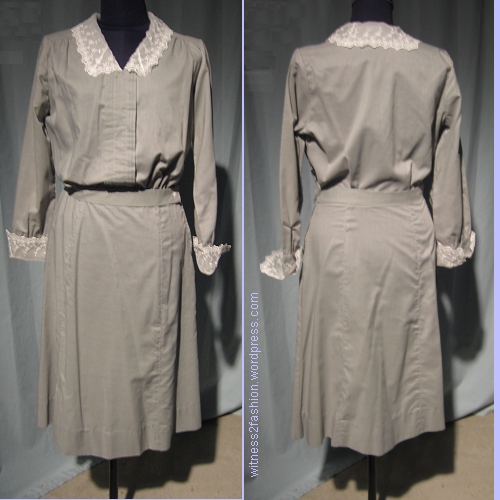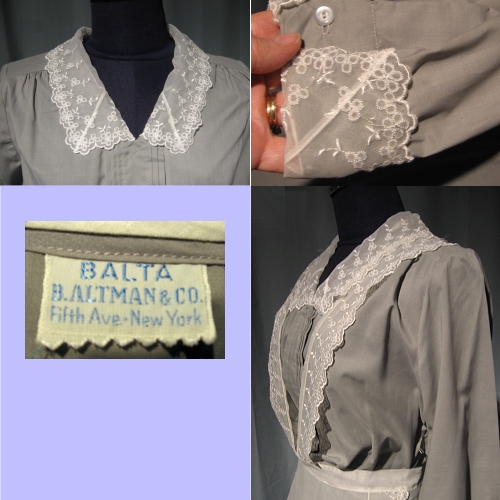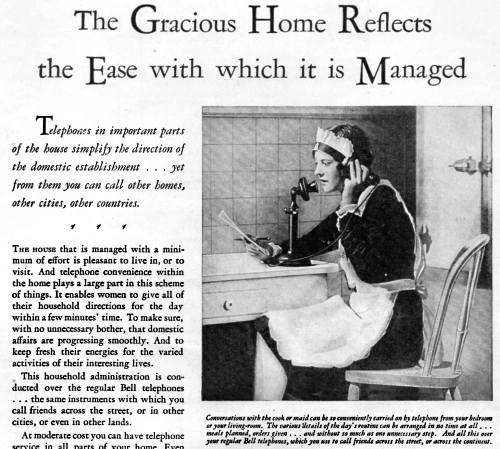
Housemaid receiving orders from her mistress via the new in-house telephone. Bell Telephone ad from Better Homes and Gardens, 1930. “
“Conversations with your cook or maid can be so conveniently carried on by telephone from your bedroom or your living-room . . . without so much as one unnecessary step.” 1930.
For theatrical costumers, pictures of maid’s uniforms are as interesting — and probably more useful — than pictures of couture. Here is a sampling of maids’ uniforms from 20th century magazine ads, followed by a couple of vintage uniforms sold by department stores. Some of them follow the Victorian tradition of gray, print, and/or colored uniforms for day wear, and black uniforms for afternoon and evening, when the maid was more likely to be seen by dinner guests. These ads are in chronological order, but the most noticeable changes are variations in hem length, which can’t always be seen in the ads.
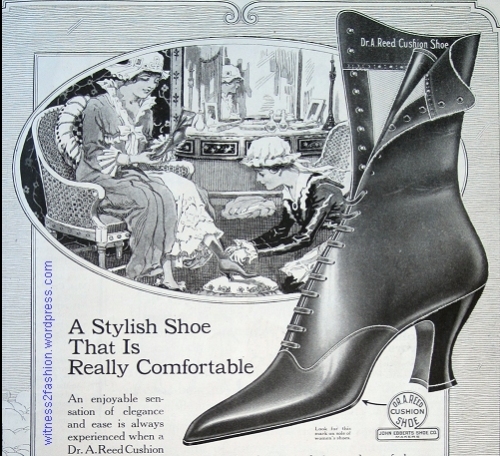
In the boudoir; a lady’s maid laces her high-top shoe. Oct. 1917; Ladies’ Home Journal. The maid’s cap, with streamers, is very old-fashioned — almost an 18th c. mopcap, and her dress is satin, like many day dresses of the WW I era.
Even in Victorian times, maids rolled up their sleeves and bared their arms for hard scrubbing and other daytime chores. However, maids usually saved their good, black uniforms for waiting at table and evening duties, when they rolled down the sleeves to the wrists. [In many households, maids were given a break around four o’clock, so they could rest a bit, and change uniforms.]
In January of 1925, the illustrator of this ad for laundry soap imagined a princess and her ladies’ maid examining the lace on an evening wrap.
In the twenties, maids’ caps have become just a ribbon headband trimmed with ruffles, more symbolic than useful.
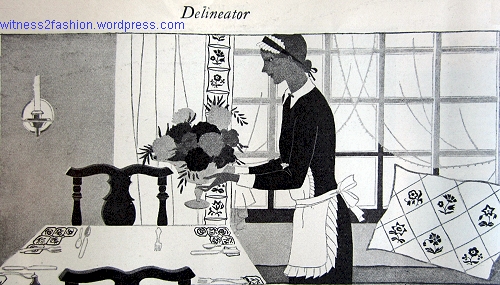
Butterick illustration for Delineator’s embroidery page. Maid setting the table, Feb. 1929. Note her below-the-waist apron.
The difficulty of tying and keeping a half-apron’s waist at the 1920’s hip level can be seen in all of these 1920’s illustrations, including the one just above. But maids were never supposed to rival the chic of their employers; in 1866, this maid was in trouble for leaving off her full crinoline, just as her “ladies” did.

“I understood they was a goin’ out,” [of fashion] explains the maid, whose hairstyle also mimics the style of her “betters.”
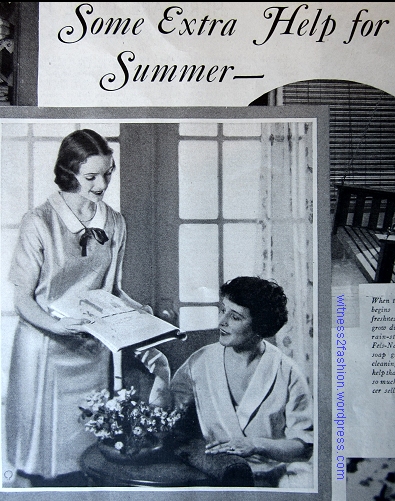
In 1929, this maid is wearing a light colored uniform — and no apron or cap — while discussing the laundry with her mistress. Note the maid’s chic short skirt. Fels Naptha Soap ad; Delineator, June 1929.
After the Crash: these 1931 illustrations are from an article on how to “Be Your Own Maid.” [The article explained the importance of keeping your closets and dresser drawers tidy.]
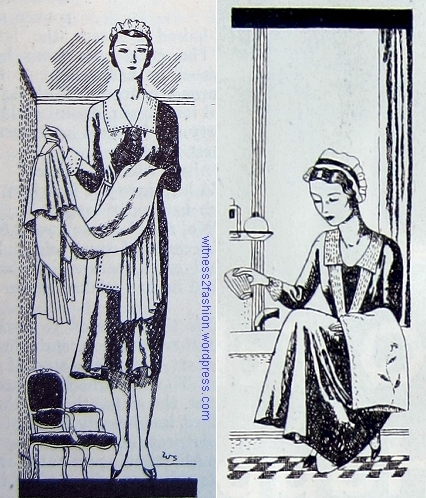
November, 1931. The maid seems to be wearing a print day dress, with different collars and aprons. This is not the lady of the house; notice her maid’s cap. Delineator.
This story illustration from 1934 shows a woman lounging (the caption suggests that she is “in a delicate condition,”) while her maid keeps busy while acting as her confidant. In this story, the maid, Karen, is the heroine.
“Ruth said, ‘Shall I have a son, Karen?’ Karen smiled. ‘Does it greatly matter?’ ”
[Digression: Karen is probably a Scandinavian immigrant. In 1948, Loretta Young won an Oscar for playing a Swedish-American farmer’s daughter who works as a servant.]
The sheer lawn apron is for maids, not waitresses. It creates “that trim, precise look all well dressed maids desire.” The straps forming a “V” were seen in the illustration from 1924, and in the thirties, and still seen on the much later vintage uniform from Altman’s, shown in detail later in this post.
The maids (or housewives) in this Baking Soda ad are wearing aprons and dresses like the Berth Robert models:
It’s not always easy to tell a servant in striped dress and white apron from a homeowner in the same work clothes, but housewives usually wore colored or embroidered aprons:
[Remembered Summers wrote about pink sinks and other 1920’s-1930’s kitchen innovations here.]
The wealthy woman in the article illustrated here suffered physical illness until she consulted a psychologist. Her long-suffering maid is alarmingly thin, but elegantly dressed in a rickrack-trimmed apron set. At least the illustrator avoided the most common 1930’s racist imagery; this maid is neither plump nor grinning: she’s an individual.

“A constant state of indecision made her seek escape in seclusion. ” Illustration for mental health article, Woman’s Home Companion, Feb. 1937.
Two Vintage Maid’s Uniforms

Maid’s uniforms sold in department stores. Both have natural waists and sheer accessories. A waitress uniform would use more sturdy, opaque apron and collar fabrics.
There’s a Bloomingdale’s label in one of these uniforms, and a B. Altman label in the other. I had no idea that top department stores did such a thorough job of supplying their customers’ every need! (And I hope the employers footed the bill for the uniforms.)
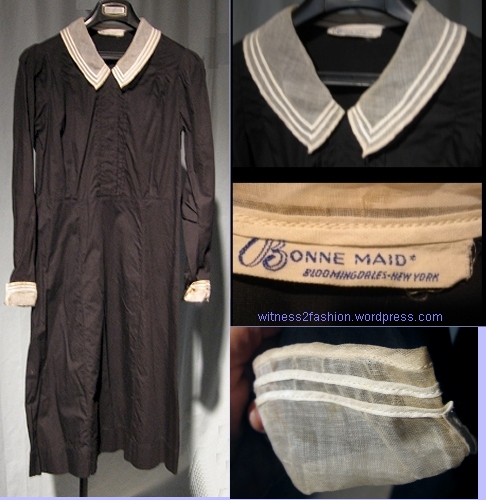
“Bonne Maid” uniform from Bloomingdale’s. Date unknown. The apron would have had stripes matching the sheer collar and cuffs.
“Bonne” is the French word for a maid, as well as the feminine form of “good,” so the company name is a pun.
I wrote about a 1930’s waitress uniform which also had a front placket, a waistband, and buttoned to the side. The cut of the dress itself is very similar to this much later one.
The workmanship is good, as seen in the mitred collar and cuffs. The dress fabric has a synthetic sheen, possibly a cotton/rayon acetate blend, which places it later in the 20th century. The apron and trim is polyester organza.
An identical gray Balta brand uniform, new, in a Bergdorf Goodman box, can be seen here. Apparently the Balta brand was carried by more than one upscale department store.


